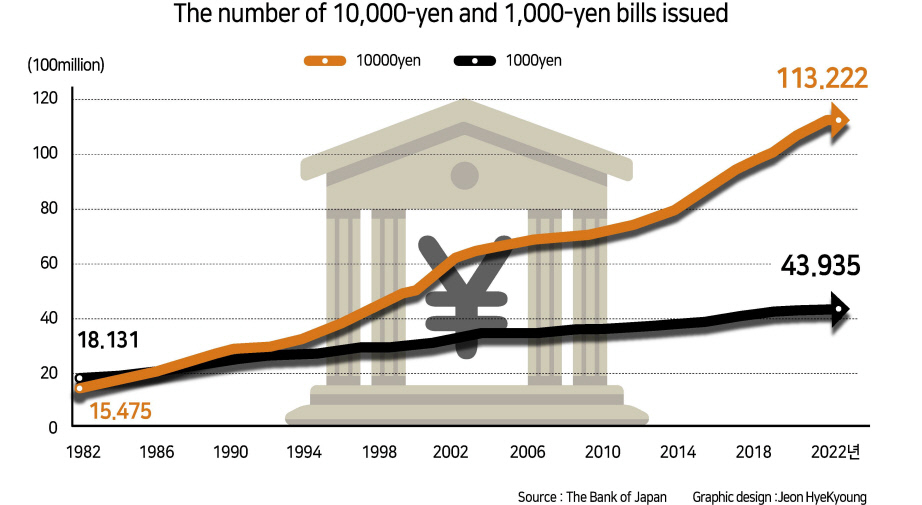
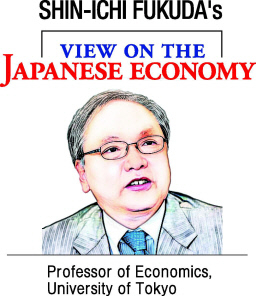
The Bank of Japan will begin issuing new banknotes this July. This will be the first new banknote issue in approximately 20 years. In Japan, despite its irreversible shift to a cashless society, the demand for cash remains strong among most households. Cash is an important medium of exchange that can be safely used by anyone, anytime, and anywhere. Therefore, an issuance of new banknotes based on advances in printing technology is essential for preventing counterfeiting and maintaining the reliability of the payment system.
To prevent counterfeiting, the new banknotes will incorporate high-resolution watermark patterns and use ink that emits light when exposed to ultraviolet light. They will also feature a 3D hologram, a world-first technology that makes a portrait appear to change direction when tilted. In addition, they will be designed with large numerals for legibility and an uneven identification mark that can be touched to distinguish between the different types of banknotes.
The incidence of counterfeit banknotes in Japan has been much lower than in other countries because of various anti-counterfeiting technologies. In 2009, the number of counterfeit notes was only 0.3 per million banknotes in circulation, compared with 207 in the United Kingdom and 100 in the United States. However, Japan is the most cash-centric country in the world. Although the incidence of counterfeit banknotes is low, there is a strong need to issue new banknotes with even better anti-counterfeiting technologies.
According to the Bank for International Settlements, the amount of currency in circulation was 23.1% of the nominal GDP of Japan in 2021, much higher than 12.8% in the Eurozone and 9.2% in the US. This is partly because cashless payments are less common in Japan. According to estimates by the Ministry of Economy, Trade and Industry, Japan‘s cashless payment ratio to total payments was approximately 36% in 2010, which is remarkably low compared with major overseas countries. Not only are there fewer counterfeit notes in Japan, but also the country’s high level of public safety makes people less aware of the risks of carrying cash. A large number of ATMs keep cash convenient as well. These factors contribute to high cash payment ratios.
| ||
| Japan will issue new banknotes from July 3, 2024, in the first redesign for 20 years. The 10,000 bill features the portrait of entrepreneur Shibusawa Eiichi, known as the “father of capitalism” in Japan, who was involved in the creation of hundreds of private companies. This is the first change to Japan’s largest-denomination banknote since thinker and educator Fukuzawa Yukichi became the face of the bill in 1984. Tsuda Umeko, a pioneer in women’s education, replaces author Higuchi Ichiyo on the 5,000 bill. Bacteriologist Kitasato Shibasaburo is set to appear on the 1,000 bill in place of the medical researcher Noguchi Hideyo. [NATIONAL PRINTING BUREAU] |
However, the high cash payment ratio is not the only reason Japan is a cash-centric country. Even as cashless payments have gradually progressed and cash payments have gradually declined, the volume of banknotes issued in Japan has increased dramatically over the past few decades. The issuance of 10,000-yen bills increased to 116 trillion yen in 2023, more than three times the amount in 1983. Although it would be natural for issuances to increase as the size of the economy grows, the nominal GDP grew by only 15% during this period. This suggests that most of the large amounts of banknotes issued thus far have not been used for daily transactions but have been stored in safes or at other secure storage locations, at home or elsewhere.
The chart shows how the number of 10,000-yen and 1,000-yen bills issued changed from 1982 to 2023. In Japan, 10,000 yen and 1,000 yen are the largest and smallest denominations of bills, respectively. In the mid-1980s, the number of 10,000-yen and 1,000-yen bills issued was about the same, approximately 2 billion each. By 2020, however, more than 10 billion 10,000-yen bills had been issued, whereas only approximately 4 billion 1,000-yen bills were issued. Assuming the ratio of 10,000-yen bills to 1,000-yen bills used for cash payments remained the same over time, this suggests that at least 6 billion 10,000-yen bills were not used for daily transactions and were held only as stores of value in 2020. It is estimated that more than half of the 10,000-yen notes issued are stored as unused cash.
One reason for this is the Bank of Japan‘s ultra-low interest rate policy over the past few decades. This policy made it less attractive for Japanese households to deposit financial assets in banks. The increase in the number of 10,000-yen bills issued accelerated sharply in the late 1990s when the Bank of Japan sharply cut interest rates. A more important reason, however, is that holding cash is an effective means of avoiding taxes, especially inheritance taxes. When financial assets are deposited in banks and other financial institutions, tax authorities can confirm their exact balances and tax them relatively easily. By contrast, when financial assets are held in cash, it is not easy for tax authorities to determine the exact amounts. Therefore, it is highly likely that cash storage in safe or other secure storage locations has been widely used to reduce inheritance and other tax burdens, especially by wealthy individuals.
| ||
| a range of safety deposit boxes at a showroom in Tokyo [Reuters] |
In Japan, inheritance tax used to be levied only on a very limited number of wealthy individuals. However, the inheritance tax system was revised drastically in 2015, nearly doubling the number of people subject to inheritance tax. It is highly likely that the reform has moved many people toward retaining the 10,000-yen bills as unused cash to reduce their tax burden. In 2010, the rate of increase in the 10,000-yen bills issued was less than 2% annually. However, it accelerated rapidly after the tax reform was announced, exceeding 6% per year in 2015 and remaining high thereafter. Contrariwise, over the same period, the growth rate of the number of 1,000-yen bills issued changed only a little. This suggests that people who wanted to reduce their inheritance tax burden converted large amounts of financial assets into 10,000-yen bills and stored them as unused cash.
Cash plays an important role in stimulating economic activity, because it facilitates transactions and allows anyone to use it anywhere at any time. The more efficiently cash payments are made, the more actively the transactions will growth. Therefore, if cash is held only to avoid taxes and is not used for transactions, it could stagnate the economy. The large amount of unused 10,000-yen bills may have exacerbated the secular stagnation that has persisted in the Japanese economy since the mid-1990s. Activating cash transactions and stimulating the economy are major agendas before the Japanese economy.
There have been some desirable symptoms in the recent Japanese economy. Since the fall of 2022, the consumer price index has exceeded 2%, which is the highest rate in nearly 40 years. Higher inflation rates make cash holdings less attractive as a store of value. With the Bank of Japan ending its negative interest rate policy in March 2024, interest rates are also beginning to rise. Higher interest rates will shift household wealth from cash to other financial assets. Interestingly, under the new circumstances, annual growth rate of banknote issuances has turned negative since last November. This phenomenon has never occurred in the past quarter century. This is likely partly due to the desirable symptoms mentioned above. However, we are not sure whether the downward trend will continue even after new banknotes are issued. Restoring the intrinsic role of cash is essential to reviving the economy. If newly issued banknotes were widely used in transactions, they would play an important role in Japan‘s recovery from long-term stagnation. The issuance of new banknotes is important not only to prevent counterfeiting, but it should also be a new driving force behind creating a virtuous cycle in Japan.
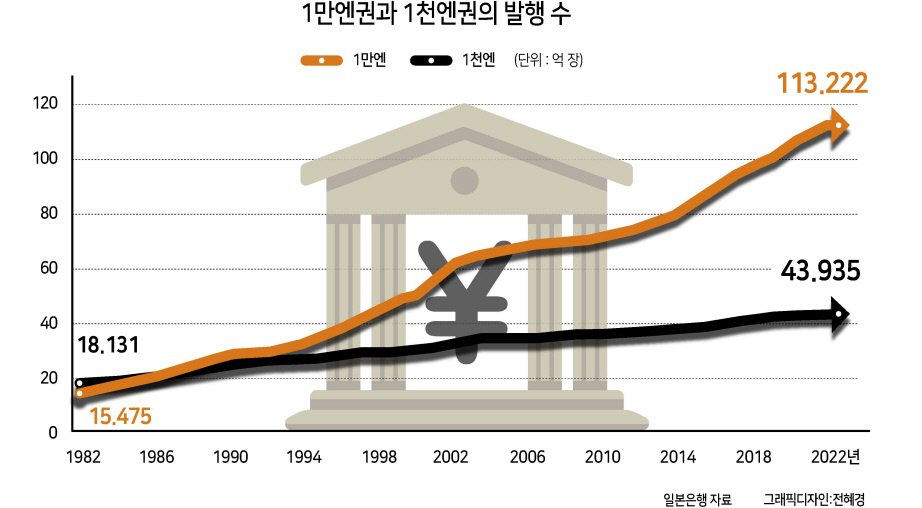

신권 발행이 일본 경제에 가져올 변화
일본은행이 올 7월부터 새로운 지폐를 발행할 예정이다. 약 20년 만의 신권 발행이다. 일본 정부가 “현금 없는 사회로의 돌이킬 수 없는 전환”을 시작했음에도 불구하고 대부분의 일본 가계에서는 여전히 현금에 대한 수요가 강하다. 현금은 언제 어디서나 누구든지 안전하게 사용할 수 있는 중요한 교환 매개다. 따라서 인쇄 기술의 발전을 기반으로 한 신권 발행은 위조지폐를 예방하고 결제 시스템의 신뢰성을 유지하기 위해 필수적이다.
위조 방지를 위해 새로 발행되는 지폐에는 고해상도 워터마크 패턴이 적용되고 자외선에 노출되면 빛을 내는 잉크가 사용된다. 3D 홀로그램도 적용할 계획인데, 이는 지폐를 기울이면 지폐 속 인물의 방향이 바뀌는 것처럼 보이는 세계 최초의 기술이다. 그 외에도 가독성을 위해 숫자의 크기가 커지고, 지폐의 종류를 만져서 구분할 수 있도록 까끌까끌한 식별 표시도 들어갈 예정이다.
다양한 위조 방지 기술 덕분에 일본의 위조 지폐 발생률은 다른 나라에 비해 훨씬 낮다. 2009년에 일본의 위조 지폐 수는 유통되는 지폐 100만 장당 0.3장에 불과했던 반면, 영국은 207장, 미국은 100장이었다. 그러나 일본은 세계에서 가장 현금 중심적인 국가다. 그렇기 때문에 낮은 위조 지폐 발생률에도 불구하고, 개선된 위조 방지 기술이 적용된 새 지폐를 발행해야 할 필요성이 매우 높다.
국제결제은행(BIS)에 따르면, 2021년 일본의 유통 통화량은 명목 GDP의 23.1%로, 유로존의 12.8%와 미국의 9.2%보다 훨씬 높았다. 부분적인 이유로는 일본에서는 무현금 결제가 아직 덜 보편적이란 점을 들 수 있다. 일본 경제산업성이 추산한 바에 따르면, 일본의 무현금 결제 비율은 약 36%로 해외 주요 국가에 비해 현저히 낮은 수준이다. 일본에선 위조 지폐가 적을 뿐 아니라 높은 치안 수준으로 덕분에 사람들이 현금을 소지하는 것을 그렇게 위험하게 생각하지 않는다. 또한, ATM기가 많아 현금을 편리하게 찾을 수 있다. 이러한 요소들로 인해 현금 결제 비율이 여전히 높다.
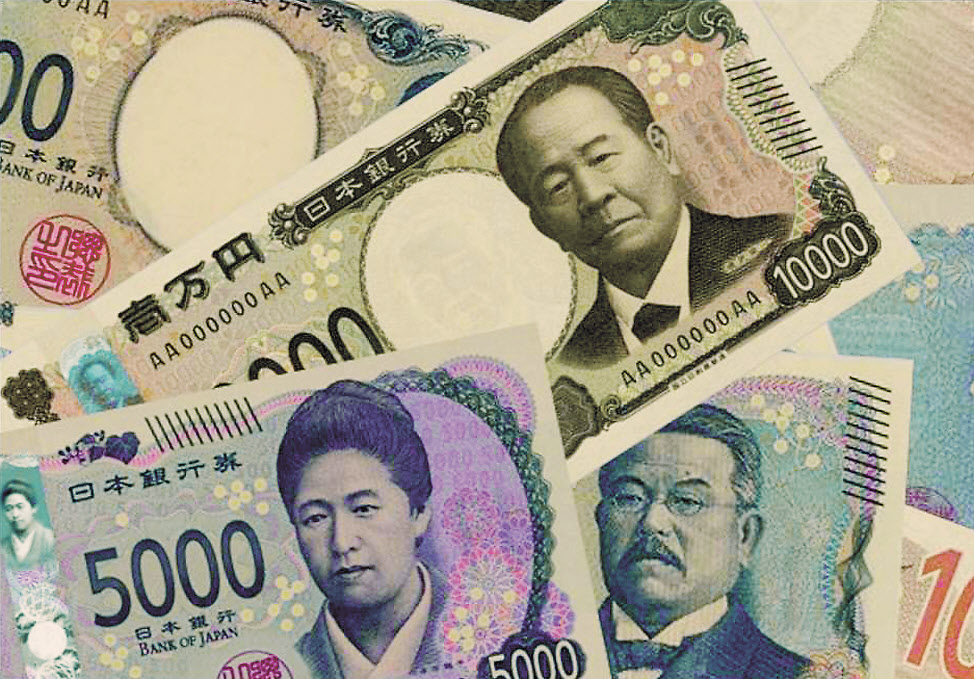
그러나 일본이 현금 중심적인 국가인 이유가 높은 현금 결제 비율 때문만은 아니다. 무현금 결제가 점진적으로 발전하고 현금 결제가 점차 감소하는 가운데, 지난 수십 년 동안 일본에서 발행되는 지폐의 양은 급격히 증가했다. 2023년 1만엔권 발행액은 116조엔으로, 1983년에 비해 3배 이상 늘어났다. 경제 규모가 커짐에 따라 발행액이 늘어나는 건 당연한 일이지만, 동일 기간 동안 명목 GDP는 15%밖에 증가하지 않았다. 이 점은 지금까지 발행된 많은 지폐의 대부분이 일상 거래에 사용되지 않고 집이나 기타 장소의 금고나 다른 안전한 곳에 보관되어 있다는 것을 시사한다.
1982년부터 2023년까지 1만엔권과 1천엔권의 발행매수가 어떻게 변화했는지 보여준다. 일본에서 1만엔권과 1천엔권은 각각 명목 금액이 가장 큰 지폐와 가장 작은 지폐다. 1980년대 중반에는 1만엔권과 1천엔권의 발행매수가 각각 20억장으로 거의 비슷했다. 그러나 2020년에는 1만엔권이 100억장 이상 발행된 반면, 1천엔권은 약 40억장만 발행됐다. 현금 결제에 사용되는 1만엔권과 1천엔권의 비율이 일정하게 유지되었다고 가정했을 때, 2020년에 최소 60억 장의 1만엔권이 일상 거래에 사용되지 않고 가치 저장용으로 보관되고 있다는 뜻이다. 발행된 1만엔권의 절반 이상이 미사용 현금으로 보관되고 있는 것으로 추정된다.
그 이유 중 하나는 지난 수십 년 동안 일본은행이 유지해 온 초저금리 정책 때문이다. 이 정책으로 인해 일본 가계에게 금융 자산을 은행에 예치하는 것의 매력이 떨어졌다. 1만엔권은 1990년대 후반 일본은행이 금리를 대폭 인하했을 때 발행량이 빠르게 증가했다. 그러나 이보다 더 중요한 이유는 현금을 보유하는 것이 세금, 특히 상속세를 피할 수 있는 효과적인 수단이기 때문이다. 금융 자산을 은행이나 다른 금융 기관에 예치하면 과세 당국은 정확한 잔액을 확인하고 상대적으로 쉽게 세금을 부과할 수 있다. 반면, 금융 자산을 현금으로 보유하는 경우, 과세당국이 정확한 과세액을 결정하기가 쉽지 않다. 따라서 특히 부유층 사이에서 상속세 및 기타 세금 부담을 줄이기 위해 금고나 기타 안전한 보관 장소에 현금을 보관하는 관행이 널리 퍼졌을 가능성이 높다.
과거 일본의 상속세는 매우 제한된 수의 부유한 개인에게만 부과됐다. 그러나 2015년 상속세 제도가 대폭 개정되면서 상속세 대상자가 2배 가까이 늘어났다. 이 개혁으로 인해 많은 사람들이 세금 부담을 줄이기 위해 1만엔권을 미사용 현금으로 보관하기 시작했을 가능성이 높다. 2010년의 1만엔권 발행량 증가율은 연평균 2% 미만이었다. 그러나 이는 세제개편이 발표된 이후 급격히 가속화되어, 2015년에는 연평균 6%를 넘었고 이후로 계속 높은 수준을 유지하고 있다. 반면, 동일 기간의 1천엔권의 발행량 증가율은 조금 변화했을 뿐이다. 이 점은 상속세 부담을 줄이려는 사람들이 거액의 금융 자산을 1만엔권으로 전환해 미사용 현금으로 보관해 두었음을 시사한다.
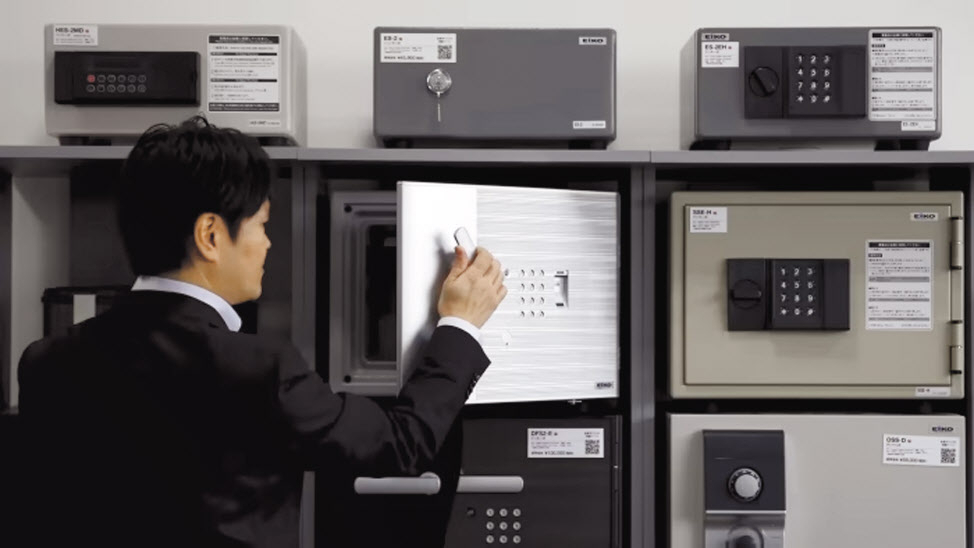
현금은 거래를 용이하게 하고, 언제 어디서나 누구든 사용할 수 있다는 점에서 경제 활동 활성화에 중요한 역할을 한다. 현금 결제가 효율적으로 이루어질수록 거래는 더 활발하게 성장할 것이다. 따라서 세금을 피하기 위해 현금을 거래에 사용하지 않고 그냥 보관하기만 하면 경기가 침체될 수 있다. 앞서 말한 다량의 미사용 1만엔권들이 1990년대 중반 이후 지속된 일본의 장기 경기침체를 악화시켰을 가능성도 있다. 현금 거래 활성화와 경기 부양은 현재 일본 경제 앞에 놓여있는 중요한 의제다.
최근 일본 경제에는 몇 가지 바람직한 징후가 보이고 있다. 2022년 가을 이후 소비자물가지수가 2%를 넘어섰는데, 이는 거의 40년 만에 가장 높은 수치다. 인플레이션율이 높아지면, 가치 저장 수단으로 현금을 보유하는 것의 매력이 떨어진다. 2024년 3월 일본은행이 마이너스 금리 정책을 종료하면서 금리도 오르기 시작했다. 금리가 높아짐에 따라 가계의 부가 현금에서 다른 금융 자산으로 이동할 것이다. 흥미로운 점은 이러한 상황에서 지난해 11월 이후 화폐 발행량의 연평균 증가율이 마이너스로 돌아섰다는 것이다. 지난 25년 간 단 한 번도 발생한 적이 없던 현상이다. 이는 부분적으로는 위에서 언급한 바람직한 징후들 때문일 것이다.
그러나 신권이 발행된 이후에도 하락세가 지속될지는 미지수다. 경제를 살리기 위해서는 현금 본연의 역할을 회복하는 것이 필수적이다. 새로 발행되는 신권이 거래에 널리 사용된다면 이는 일본이 장기 침체에서 벗어나는 데 중요한 역할을 할 것이다. 신권 발행은 위조 방지를 위해서도 중요하지만, 더 나아가 일본에서 선순환 구조를 만드는 새로운 원동력이 되어야 할 것이다.
bonsang@heraldcorp.com














